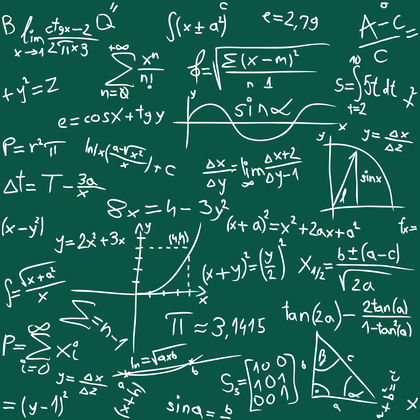Multiplication

Multiplication is often described as repeated addition. For example, the product 3 × 4 is equal to the sum of three 4s: 4 + 4 + 4.
Terminology
In talking about multiplication, several terms are used. In the expression 3 × 4, the entire expression, whether it is written as 3 × 4 or as 12, is called the product. In other words, the answer to a multiplication problem is the product. In the original expression, the numbers 3 and 4 are each called multipliers, factors, or terms. At one time, the words multiplicand and multiplier were used to indicate which number got multiplied (the multiplicand) and which number did the multiplying (the multiplier). That terminology has now fallen into disuse. Now the term multiplier applies to either number.
Multiplication is symbolized in three ways: with an ×, as in 3 × 4; with a centered dot, as in 3 · 4; and by writing the numbers next to each other, as in 3(4), (3)(4), 5x, or (x + y)(x − y).
Rules of multiplication for numbers other than whole—or natural—numbers
Common fractions. The numerator of the product is the product of the numerators; the denominator of the product is the product of the denominators. For example, .
Decimals. Multiply the decimal fractions as if they were natural numbers. Place the decimal point in the product so that the number of places in the product is the sum of the number of places in the multipliers. For example, 3.07 × 5.2 = 15.964.
Signed numbers. Multiply the numbers as if they had no signs. If the two factors both have the same sign, give the product a positive sign or omit the sign entirely. If the two factors have different signs, give the product a negative sign. For example, (3x)(−2y) = −6xy; (−5)(−4) = +20.
Words to Know
Factor: A number used as a multiplier in a product.
Multiplier: One of two or more numbers combined by multiplication to form a product.
Product: The result of multiplying two or more numbers.
Powers of the same base. To multiply two powers of the same base, add the exponents. For example 10 2 × 10 3 = 10 5 and x 5 × x −2 = x 3 .
Monomials. To multiply two monomials, find the product of the numerical and literal parts of the factors separately. For example, (3x 2 y)(5xyz) = 15x 3 y 2 z.
Polynomials. To multiply two polynomials, multiply each term of one by each term of the other, combining like terms. For example, (x + y)(x − y) = x 2 − xy + xy − y 2 = x 2 − y 2 .
Applications
Multiplication is used in almost every aspect of our daily lives. Suppose you want to buy three cartons of eggs, each containing a dozen eggs, at 79 cents per carton. You can find the total number of eggs purchased (3 cartons times 12 eggs per carton = 36 eggs) and the cost of the purchase (3 cartons at 79 cents per carton = $2.37).
Specialized professions use multiplication in an endless variety of ways. For example, calculating the speed with which the Space Shuttle will lift off its launch pad involves untold numbers of multiplication calculations.